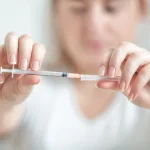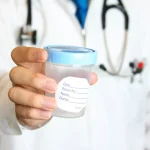How Long Does It Take to Get Pregnant With IVF?
Wondering how long it takes to get pregnant with IVF? You’re not alone. Timelines are one of the most common concerns couples have when considering fertility treatment. IVF is not an overnight process. While the procedure itself spans just a few weeks, the preparation, testing, and sometimes repeated cycles can stretch the journey into several months.
The good news? Understanding the IVF process in detail helps you set realistic expectations and prepare both emotionally and financially. Let’s break it down step by step.
Preparation, Consultation & Testing (4–12 Weeks)

Before IVF treatment begins, you’ll go through a preparation phase:
- Consultation & history: A fertility specialist reviews your medical and reproductive background, lifestyle, and any previous treatments.
- Diagnostic testing: Includes blood tests (to check hormone levels), ultrasound scans (to assess ovarian reserve and uterine health), and semen analysis for male partners.
- Pre-treatment adjustments: Sometimes, doctors recommend lifestyle changes (diet, supplements, or quitting smoking) or treat underlying issues like fibroids or infections before IVF.
This stage can be as short as 4 weeks if everything looks clear, or stretch to 2–3 months if more tests or treatments are required. Think of it as laying a foundation for your IVF success.
Ovarian Stimulation & Egg Retrieval (~2–3 Weeks)
Once ready, you’ll start hormonal medications to encourage the ovaries to produce multiple eggs instead of just one.
- Stimulation: Daily injections of hormones for 10–14 days, with regular monitoring through ultrasounds and bloodwork.
- Egg retrieval: When eggs mature, they’re collected through a minor surgical procedure under sedation. It usually takes less than an hour, and most patients recover within a day.
This is one of the most intense but exciting stages you’ll be closely monitored to ensure your body responds well. From start to finish, this phase lasts about 2–3 weeks.
Fertilization & Embryo Development (3–6 Days)
After retrieval, your eggs meet sperm in the lab:
- Fertilization: Either by standard IVF or ICSI (Intracytoplasmic Sperm Injection), where a single sperm is injected directly into the egg.
- Embryo growth: Fertilized eggs are cultured in the lab for 3–6 days, with embryologists monitoring progress carefully.
Depending on your treatment plan, embryos may be transferred fresh or frozen for later use.
Embryo Transfer (~1 Week)
Embryo transfer is a quick, painless procedure:
- Fresh transfer: Usually done on day 3 or 5 after fertilization.
- Frozen transfer: Takes longer, as embryos are thawed and the uterus is prepared with medication, which can add 2–4 weeks.
The number of embryos transferred depends on age, embryo quality, and your doctor’s recommendations. After transfer, you enter the infamous “two-week wait.”
The Two-Week Wait & Pregnancy Test (~2 Weeks)
Roughly 10–14 days after transfer, you’ll take a blood test to check hCG levels (the pregnancy hormone). If positive, an early ultrasound around week 6–7 confirms pregnancy.
This waiting period can feel like the longest part of IVF, full of anticipation, anxiety, and hope. Emotional support from your partner, family, or clinic counselors is crucial here.
Overall Timeline Summary
| IVF Stage | Approx. Duration |
| Preparation & Testing | 4–12 weeks |
| Ovarian Stimulation & Retrieval | ~2–3 weeks |
| Fertilization & Embryo Growth | 3–6 days |
| Embryo Transfer | 1 week (fresh or frozen) |
| Pregnancy Test | 2 weeks |
Total: ~6–8 weeks per cycle, or 3–5 months when including preparation and recovery.
How Many Cycles Does It Usually Take?
One of the biggest myths about IVF is that it works immediately. In reality:
- Average success per cycle: 30–45%, depending on age and health.
- Most couples need: 2–3 cycles for a successful pregnancy.
- Younger women (under 35): Often see higher success rates, while women over 40 may need more attempts.
While one cycle may be enough for some, planning emotionally and financially for multiple cycles is more realistic.
Factors That Can Affect IVF Timeline

Not every IVF journey follows the same timeline. While the general framework is similar, several factors can lengthen or shorten the process depending on your personal circumstances. Here are the main ones to keep in mind:
1. Age
Age is one of the biggest determinants of IVF timelines. Women under 35 may respond more quickly to ovarian stimulation and often achieve pregnancy within fewer cycles. Older patients, however, tend to have fewer eggs, lower egg quality, and reduced implantation rates, which can extend the journey. For example, women over 40 may require multiple cycles or donor eggs, which adds both time and cost.
2. Fresh vs. Frozen Embryo Transfer
With a fresh transfer, embryos are placed into the uterus within the same cycle as egg retrieval, keeping the process shorter. However, some clinics recommend freezing embryos first and transferring them in a later cycle. This frozen embryo transfer (FET) approach can add a few extra weeks, as the uterus must be hormonally prepared. The upside? Frozen transfers may sometimes yield higher success rates.
3. Extra Procedures
Add-ons like ICSI (Intracytoplasmic Sperm Injection), PGT (Preimplantation Genetic Testing), or the use of donor eggs/sperm can extend the timeline. For example, PGT requires embryos to be biopsied and tested in a lab, which adds a waiting period before transfer. Donor arrangements also involve additional legal, medical, and logistical steps.
4. Response to Medication
Not everyone responds to stimulation medications in the same way. Some patients produce a good number of mature eggs within 10 days, while others may need longer stimulation or adjusted dosages. In rare cases, cycles may need to be canceled and restarted if the response is too weak or too strong.
5. Underlying Conditions
Conditions such as PCOS, endometriosis, fibroids, or uterine abnormalities can affect IVF timelines. In some cases, doctors may recommend treating these conditions first through surgery, medication, or lifestyle adjustments, before moving forward. While this adds time upfront, it often improves overall chances of success.
9. Coping With the Emotional Side
The IVF journey isn’t just physical, it’s emotional. The waiting, uncertainty, and ups and downs can feel exhausting.
- Build a support network: Share your journey with trusted friends, family, or support groups.
- Use clinic resources: Many fertility clinics offer counseling and patient coordinators.
- Practice self-care: Gentle exercise, meditation, or journaling can ease stress.
Remember, resilience is part of the process. Taking breaks between cycles is perfectly normal and often helpful.
IVF Timelines & Summary
1. How long does one IVF cycle take?
About 6–8 weeks, from ovarian stimulation to pregnancy test.
2. Can I get pregnant on the first IVF cycle?
Yes, but many couples need 2–3 cycles for success.
3. Is frozen embryo transfer faster?
Not necessarily preparing the uterus can add 2–4 weeks, but frozen transfers may increase success rates in some cases.
4. How soon can I try again if one cycle fails?
Doctors usually recommend waiting at least 1–2 menstrual cycles before starting again, allowing your body to recover.
5. Can lifestyle changes speed up IVF success?
Yes, maintaining a healthy weight, avoiding smoking, limiting alcohol, and managing stress can all improve outcomes.
Conclusion
So, how long does it take to get pregnant with IVF? On average, 6–8 weeks per cycle, but realistically, the full journey (including prep and repeat cycles) can span 3–6 months or more. Every patient’s experience is unique, shaped by age, health, and individual response to treatment.
The most important thing? You don’t have to navigate the process alone.
At The Bridge Clinic, our IVF services offer more than medical expertise; we provide guidance, compassion, and clarity at every stage.
With that said, if you are looking for IVF services in Nigeria, feel free to book a consultation with our team today and take the first confident step on your IVF journey.
Follow us on our social media channels below:
Explore our related articles below:
Understanding IVF and Twin Pregnancies
How to Prepare Your Body for IVF Treatment: The Do’s and Don’ts








